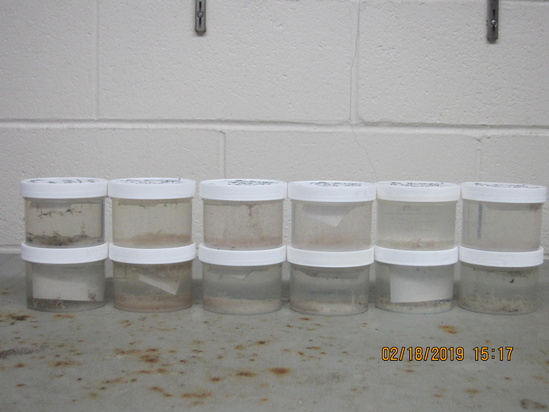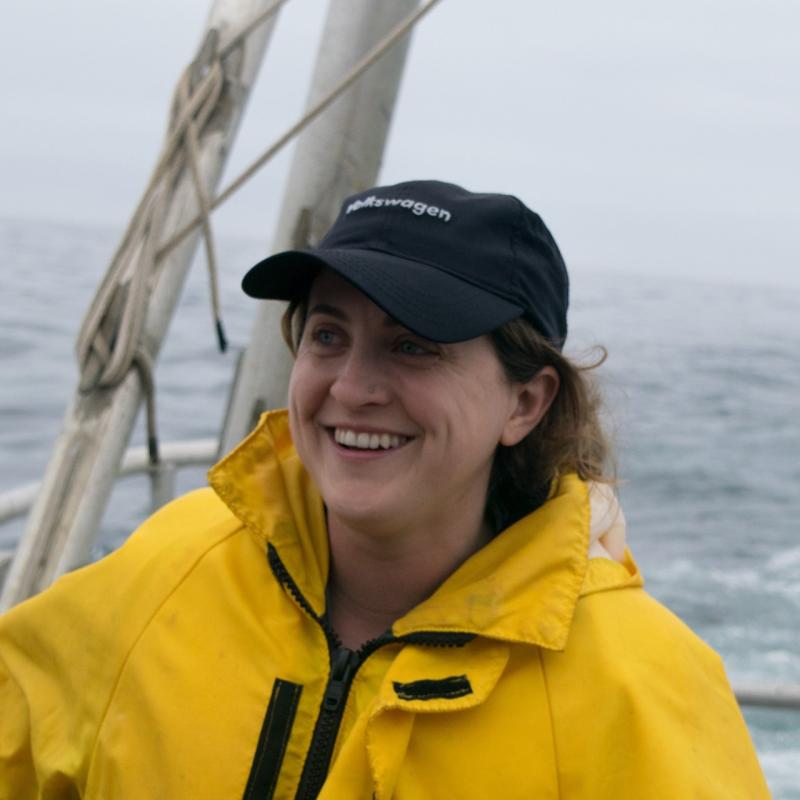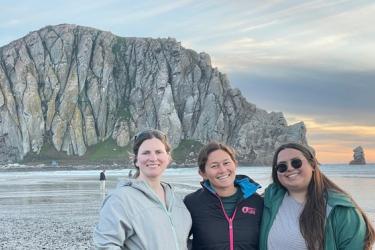Rain, snow, and governments shutdowns have not prevented the continued sampling of the Newport Hydrographic Line.

Sieving a plankton sample by the light of the super moon. Photo: NOAA Fisheries
It is a new year and with the same objective; bi-weekly oceanographic sampling out to NH-25. Not surprising for wintertime, our plankton nets have been sparse and clear so far. We are seeing a familiar warm-water wintertime copepod community. This includes Clausocalanus, Ctenocalanus, and Paracalanus.

Clausocalanus furcatus in plankton sample from February cruise. Photo: NOAA Fisheries
Of interesting note, we identified some Clausocalanus furcatus in our January and February samples. Off Newport, this species has only ever been seen in El Niño and during the Warm Blob years. Is the presence of this unusual copepod indicating different transport processes this winter?

Vertical net samples (bottom row) and bongo samples (top row) from February cruise. Photo: NOAA Fisheries
Surface temperatures are slightly warmer than average, near 11°C, and the water was very clear after NH-5.
We've also been on the lookout for pyrosomes, a pelagic tunicate that has been abundant in our waters for the past couple years. They have not been spotted since August of 2018 and they have not shown up so far this year.

Larval stages of Dungeness crab. Left to right are the zoeal stages I-IV. These larvae are pelagic (free swimming) for up to 4 months before settling to the seafloor as juvenile crabs. Photo: NOAA Fisheries

Larval phase of a Sergestid shrimp. Note all of the elaborate spines. Photo: NOAA Fisheries


